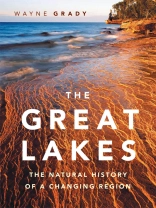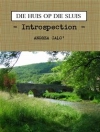The Great Lakes have been central to the development of eastern North America. In this “beautifully designed, comprehensive gem of a guide to the ecosystem at the heart of Canada” (The Tyee), award-winning science and nature writer
Wayne Grady makes scientific concepts accessible as he reveals how human impact has changed this life-giving region.
The Great Lakes: A Natural History of a Changing Region is the most authoritative, complete and accessible book to date about the biology and ecology of this vital, ever-changing terrain. Written by one of Canada’s best-known science and nature writers, it is intended not only for those who live in the Great Lakes region, but for anyone captivated by the splendor of the natural world and sensitive to the challenges of its preservation. It is both a first-hand tribute and an essential guide to a fascinating ecosystem in eternal flux.
İçerik tablosu
Prologue
1 The Freshwater Seas
2 Foundation Stones
3 The Boreal Forest
4 The Great Lakes-St Lawrence Forest
5 The Carolinian Forest
6 Special Habitats: Wetlands, Alvars, and Urban Forests
7 Water
8 Invasions
9 The Future
Appendix: Scientific Names
Bibliography
Illustration and map credits
Index
Yazar hakkında
Wayne Grady is a foremost popular science writer and the winner of three Science in Society awards from the Canadian Science Writers Association. His previously published books recounted such diverse adventures as hunting dinosaurs in the Gobi Desert, investigating global warming at the North Pole, and discovering the wild in an urban metropolis. In 2004 he collaborated with acclaimed geneticist and environmentalist David Suzuki on
Tree: A Life Story. In addition to his acclaimed work in science and nature fields, he has received the Governor General’s Award for English Translation, several National Magazine Awards, and the Brascan Award for Food Writing. He is married to the writer Merilyn Simonds and lives near Kingston, Ontario, Canada.












